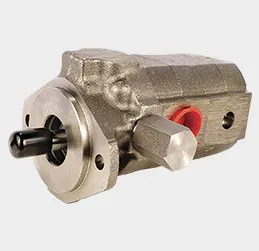stamping aluminum parts
The Art and Science of Stamping Aluminum Parts
In the world of manufacturing, aluminum has emerged as a lightweight, durable, and versatile material that plays a crucial role in the production of a variety of parts and components. Among the methods employed to shape and manipulate aluminum, stamping stands out as a highly efficient and effective process. This article delves into the intricacies of stamping aluminum parts, exploring its advantages, applications, and the technology behind it.
Understanding Aluminum Stamping
Aluminum stamping is a manufacturing process that involves the use of specialized dies to cut, shape, and form aluminum sheets into desired parts. The process typically encompasses several stages, including metal sheet preparation, die design, stamping, and finishing. Stamping can be performed using various techniques such as progressive stamping, deep drawing, and blanking, depending on the complexity of the part and the desired final shape.
One of the key benefits of aluminum stamping is its ability to produce large volumes of parts with high precision and repeatability. This makes it an ideal choice for industries that require consistent parts, such as automotive, aerospace, electronics, and consumer goods.
Advantages of Stamping Aluminum Parts
1. Lightweight Nature One of the standout features of aluminum is its low density compared to other metals like steel. This means that stamped aluminum parts can help reduce the overall weight of products, leading to improved fuel efficiency in vehicles and lower energy costs in various applications.
2. Corrosion Resistance Aluminum naturally forms a protective oxide layer when exposed to air, making stamped aluminum parts highly resistant to corrosion. This property is particularly valuable in applications where parts are exposed to harsh environmental conditions, such as marine and outdoor equipment.
3. Cost Efficiency Stamping processes can yield a high output of parts in a short amount of time, reducing manufacturing costs. Additionally, because aluminum is highly recyclable, companies can minimize their material costs while also supporting sustainability efforts.
stamping aluminum parts

4. Versatility in Design The stamping process allows for intricate designs that can include features such as embossing, punching, and bending. This versatility enables manufacturers to create complex shapes and geometries that may be challenging to achieve through other methods.
Applications of Stamped Aluminum Parts
The applications of stamped aluminum parts are virtually limitless, spanning across multiple industries. In the automotive sector, stamped aluminum components are used in car frames, body panels, and interior structures, contributing to the overall reduction of vehicle weight and improved performance. In the aerospace industry, where weight is paramount, aluminum stamping plays a vital role in producing parts for aircraft structures, landing gear, and other critical components.
Additionally, consumer electronics rely heavily on stamped aluminum parts for casings, heatsinks, and structural elements because of aluminum's excellent thermal conductivity and aesthetic appeal. Even in household products, such as kitchen appliances and furniture, stamped aluminum is commonly utilized due to its pleasing finish and lightweight characteristics.
The Technology Behind Aluminum Stamping
The success of aluminum stamping is largely dependent on advancements in technology. Modern stamping equipment, such as servo-driven presses, offers enhanced control and flexibility, allowing for quicker adjustments and higher precision. Additionally, computer-aided design (CAD) and computer-aided manufacturing (CAM) technologies have revolutionized the die design process, enabling engineers to simulate and optimize stamping operations before actual production begins.
Moreover, the integration of automation and robotics in the stamping process has improved efficiency and reduced labor costs significantly. Automated material handling, die changes, and quality inspection processes ensure that manufacturers can produce large volumes of stamped parts with minimal downtime and maximum accuracy.
Conclusion
As industries continue to seek innovative solutions to enhance efficiency while maintaining high-quality standards, aluminum stamping is poised to remain at the forefront of manufacturing technology. With its lightweight nature, cost-effectiveness, and versatility, stamped aluminum parts will continue to play an essential role in various applications across multiple sectors. As technology evolves and manufacturers embrace sustainable practices, the future of aluminum stamping looks promising, paving the way for exciting advancements and applications in the manufacturing landscape.
-
Custom Steel Sand Casting Services Precision & Durability GuaranteedNewsApr.29,2025
-
Arise Precision Casting Custom Metal Casting Solutions & ServicesNewsApr.29,2025
-
Sand Casting Guide Definition, Process & High-Quality Sand SuppliesNewsApr.28,2025
-
Premium Alloy Die Casting Manufacturer Aluminium & Zinc SolutionsNewsApr.28,2025
-
Precision Aluminum Die Casting Custom Solutions & Fast TurnaroundNewsApr.27,2025
-
Precision Complex Sand Casting Solutions Durable & Custom DesignsNewsApr.27,2025















